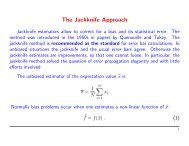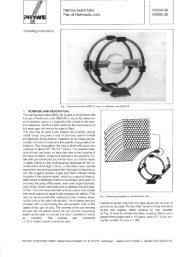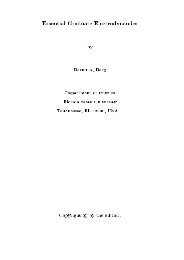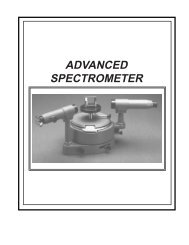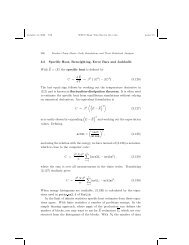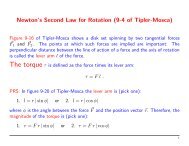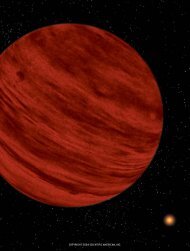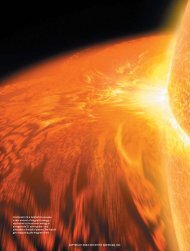MICROWAVE OPTICS - Granular Materials Laboratory
MICROWAVE OPTICS - Granular Materials Laboratory
MICROWAVE OPTICS - Granular Materials Laboratory
Create successful ePaper yourself
Turn your PDF publications into a flip-book with our unique Google optimized e-Paper software.
Microwave Optics012-04630F5Keep the slit widths the same, but changethe distance between the slits by using theWide Slit Spacer instead of the NarrowSlit Spacer. Because the Wide Slit Spaceis 50% wider than the Narrow Slit Spacer(90mm vs 60mm) move the Transmitterback 50% so that the microwave radiationat the slits will have the same relativeintensity. Repeat the measurements.(You may want to try other slit spacings aswell.)Angle0°5°10°15°20°25°Table 6.1Meter Reading Angle45°50°55°60°65°70°Meter ReadingQuestions30°75°1 From your data, plot a graph of meterreading versus q. Identify the angles atwhich the maxima and minima of theinterference pattern occur.35°40°80°85°2 Calculate the angles at which you would expect the maxima and minima to occur in a standard twoslitdiffraction pattern—maxima occur wherever d sinq = nl, minima occur whereverd sinq = nl/2. (Check your textbook for the derivation of these equations, and use the wavelengthmeasured in experiment 3.) How does this compare with the locations of your observed maxima andminima? Can you explain any discrepancies? (What assumptions are made in the derivations of theformulas and to what extent are they met in this experiment?)3 Can you explain the relative drop in intensity for higher order maxima? Consider the single-slit diffractionpattern created by each slit. How do these single slit patterns affect the overall interferencepattern?ÿä NOTE:1 Wavelength at 10.525 GHz = 2.85 cm.2 The experimenter’s body position may affect the results.22



